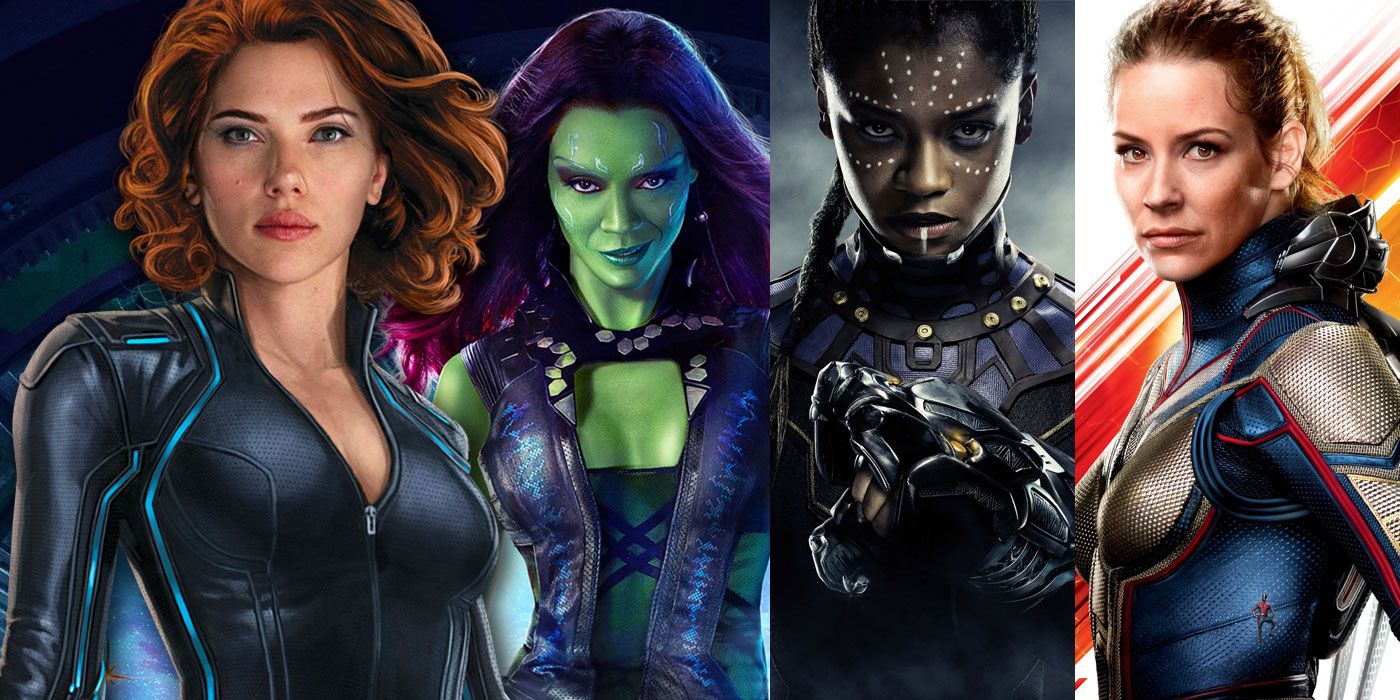There's a lot to celebrate about Marvel Studios' first ten years. 20 movies occupying one, great big cinematic universe is no mean feat, especially one that was kicked off by a relatively unknown comic book character. A few Oscar wins and box office records later, and the Marvel Cinematic Universe has overtaken Star Wars as the biggest film franchise in history.
But the MCU isn't heading into its next phase with a completely blemish-free record, and we're not talking about so-called "superhero fatigue." For all this movie-verse has done to assemble a stellar catalogue of varied and interesting characters and stories, a certain portion of its audience has been vastly underrepresented. In 20 films, Marvel Studios failed to release any solo movies starring a female character. (It's also worth mentioning that only one was led by a character of color, and none by a visibly LGBTQ character.)
RELATED: Fandango Survey Ranks Fans’ Top 10 Female Superheroes, Villains2019
The MCU has, however, consistently featured women in both big and small roles. So, while they might not be the titular star, this consistency should make up for them always playing second fiddle to male characters, right? Unfortunately, we can now say categorically that it doesn't.
After adding up all the data on MCU Heroes screen time from this exhaustive IMDb list a sadly predictable discrepancy in male/female screen time emerges. Major male heroes (the Avengers, Guardians of the Galaxy, Spider-Man and Nick Fury) have racked up a little over 29 hours of screen time in the MCU's first decade, while major female heroes (Black Widow, Scarlet Witch, Wasp, Gamora and, as an anti-hero, Nebula) account for a measly 4 and a half hours. That means from Iron Man to Ant-Man and the Wasp, female leads feature in a little over 10% of roughly 40 hours worth of film, compared to over 50% for male leads.
RELATED: Marvel Cinematic Heroes Ranked, According to Screen Time
What's particularly notable is that Black Widow -- the most prominent female character of the MCU’s first ten years -- has been in seven movies so far, the most of any female character, but has had less total screen time than Ant-Man, who's appeared in just three. Even compared to Bruce Banner’s six-movie appearance total -- only one of which was he was the title star of -- Natasha Romanoff falls around 19 minutes short.
Also notable is that, despite having her name in the title, Wasp only receives 35 minutes of screen time compared to Ant-Man's 42 in the Ant-Man sequel. Seven minutes might not seem like much in real life, but in films, every second counts. It makes her look less like an equal partner and more like an important sidekick.
Now, the counter argument to this is, of course, Marvel didn't give any female character her own film in its first 10 years (Wasp had to share hers) so it's only natural that they've gotten less screen time. Plus, there just aren’t as many women in the MCU as men. It's just basic math. But that just begs the question people have been asking for years: Why haven't there been more women, and why haven’t they been getting their own films?
Even adding more minor female characters to the mix like Maria Hill, Mantis, The Ancient One, Peggy Carter and Valkyrie, along with female villains like Hela, and their total still doesn’t come close to the amount of time Marvel’s main male characters alone have been able to enjoy by carrying their own series. Any way you look at it, women account for too little screen time in the biggest film franchise of all time.
There is one interesting exception, though. In The Avengers: Infinity War, Thanos dominates the total screen time at 31 minutes, the first villain to do so in the MCU. And guess who's right below him? His favored child, Gamora, with 20 minutes. This would be something to commend, if it weren't for the fact that Gamora's main reason for being in the film was to be tossed over a cliff by her father in order to advance the plot. And while the moment is a successfully shocking one, Gamora isn't even the focus of her own death scene. Instead, the audience is directed towards her tearful father; the ending of her life is a character-defining moment in his. The impression we're left with is simple; for a female character to be given a significant amount of screen time in a Marvel movie, there has to be a really, really specific reason. Their worthiness in front of the camera has to be proven and earned in a way that doesn't appear to be as true for male ones.
RELATED: The Problem With Gamora's Avengers: Infinity War Storyline
Black Widow’s proliferance in so much of the MCU might have given off the appearance of making up for the deficit, but it's an appearance that is clearly deceiving. Hard data indisputably proves the visible gender inequality of the MCU’s first decade -- information that's easily passed us by when we're placated by 30 seconds of Scarlet Witch pulling out Ultron's heart, or Shuri referencing her favorite Vine. These characters are well-written, well-played and have a lot of cool comic book lore behind them, but, somehow, we're just not seeing anywhere near as much of them as we should be.
Clearly, Captain Marvel has a lot of catching up to do over the next ten years.

